You might think that, being only a short distance as the crow flies from Borneo to Sulawesi, it would be quick to get there. My idea of traveling into Kalimantan (Indonesian Borneo) to get to Sulawesi became less appealing when I calculated that it would take 4 days, 1 ferry ride and 3 flights to get to Manado - which I could achieve (significantly more cheaply) in one day if I made to huge backtrack to KL. Which I did.
On the flight to Manado - northern Sulawesi's main city - I met a Canadian guy called Ash. We tagged along together to a little hotel near the port from where we hoped to head over to Bunaken island the next day. Sulawesi is a very oddly shaped island; some people say it looks like the letter K although I think of it more as a 'G' on top of a lower case 'n'. The northern peninsula is a wealthy area (for Indonesia) and has a cluster of islands, including Bunaken, around the eastern tip that have a worldwide reputation for fabulous diving.
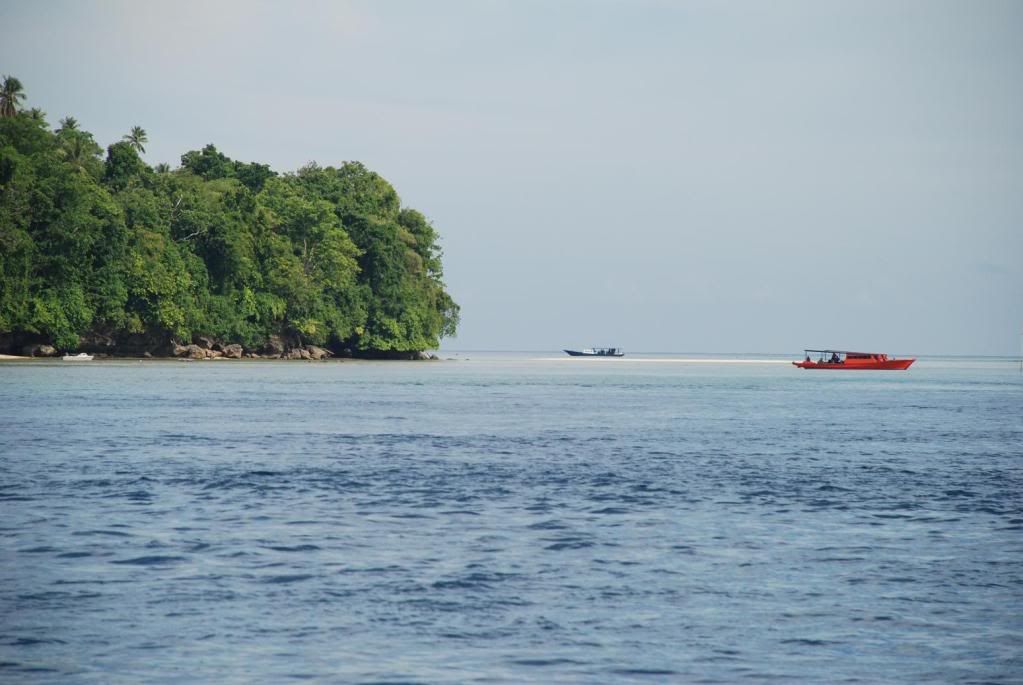
Bunaken, our first destination, is only an hour from Manado by boat and sadly receives a lot of sea-borne trash both from Manado city and larger currents that come from southern Sulawesi and eastern Borneo. In the wet season the rubbish can be 2 feet deep on the western beaches; although it was dry season we opted to stay on the eastern beaches at a little place called Lorenzos. On the way we teamed up with 2 French girls with a similar diving fixation; leaving from the island as we arrived were Andrew and Natalia, the English couple from my Kinablu trekking group.
Lorenzos had a great, laid back family atmosphere; often as the guests ate together around a single large table the local house band would strike up. Their homemade instruments were fabulous - my favourite was bass which sounded great.
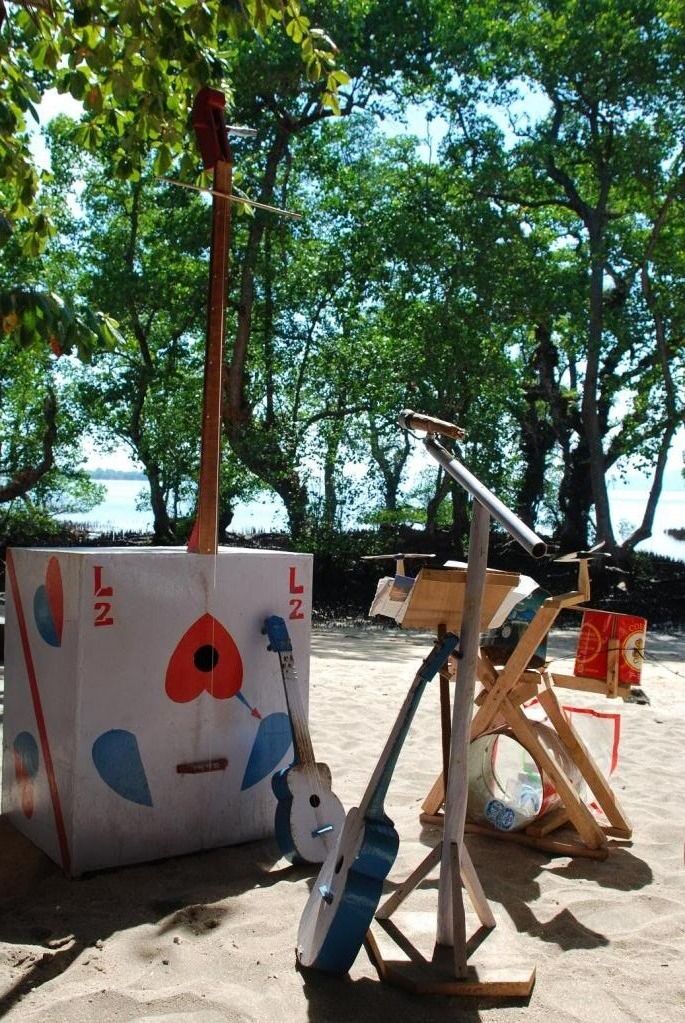
The diving - which so many people rave about - was extremely pretty but after 6 dives I was finding it a little boring. There was a lot of floating rubbish and very few big fish; it was superb if you like looking at the small stuff but overall it was not as good as I had heard or hoped.
After a few days Ash and I cleared off to Lembeh for more diving via an expensive charter car - sadly the locals in north Sulawesi have clocked onto the fact that most tourists are divers who are happy to pay US$35 for a 1.5 hour taxi ride and charge accordingly.
The Lembeh Strait is a unique spot for diving. A couple of decades ago someone wanted to build a beach resort in the Strait; whilst surveying the seabed for piles for the jetty the divers noticed some unusual critters on the sandy bottom, and took some photos. Those photos found there was to an American university where they could not be identified - a research group was sent out and a whole array of new organisms were discovered. They are mainly bottom dwelling small creatures that you search for in the black sand bottom - the term "muck diving" was born.

Diving Lembeh was fascinating but a little scary - no dive briefings and no depth gauge (for me or Ash), plus an dive guide who didn't care. We would have said something to the Canadian owner but he clearly did not care either..... The creatures were pretty special though - from the hairy frogfish to the stargazer and pygmy seahorses. The last were wonderful little things but I can't imagine they will be around in 10 years time - the amount of stress they are put through by flash photography each day must be huge.
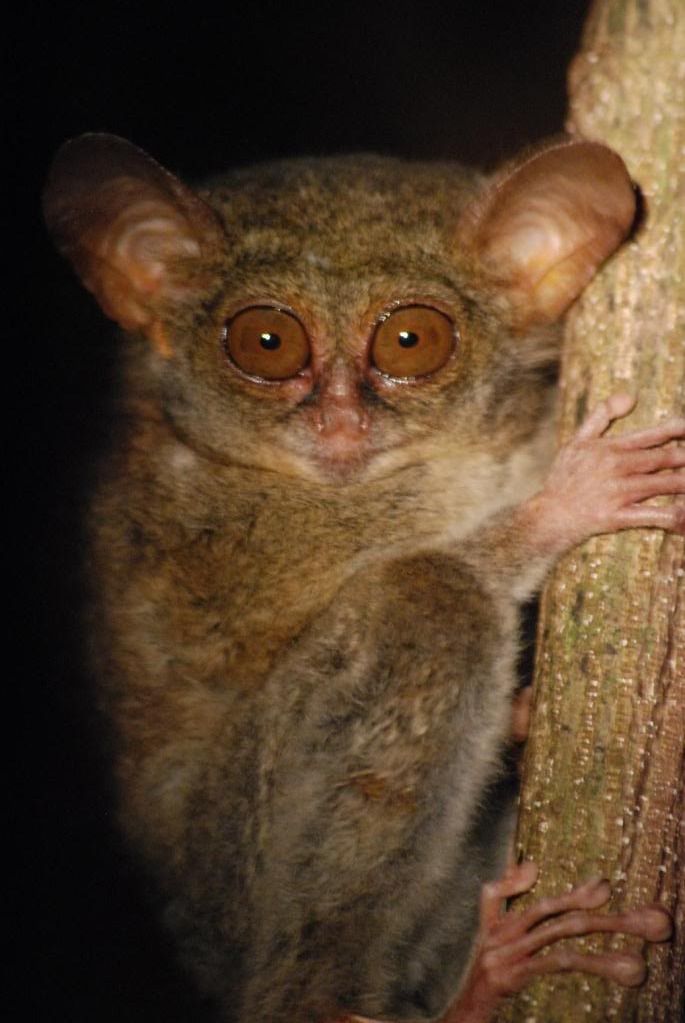
Western Tarsier - with flash
After a horrifically expensive 24 hours (and 4 dives) in Lembeh we headed up to nearby Tangkoko Park, home of the tiny Western Tarsiers - the world's smallest primate - and critically endangered black crested macaques - endemic to north Sulawesi. That evening Ash and I saw some very cute tarsiers as they emerged at dusk from their family 'sleeping tree', but were fairly disgusted by the other tourists taking near constant flash-photography of the wide-eyed little critters. We discussed doing some kind of research into the long term effects of this.... then later met the very researcher who was doing the project we talked out.
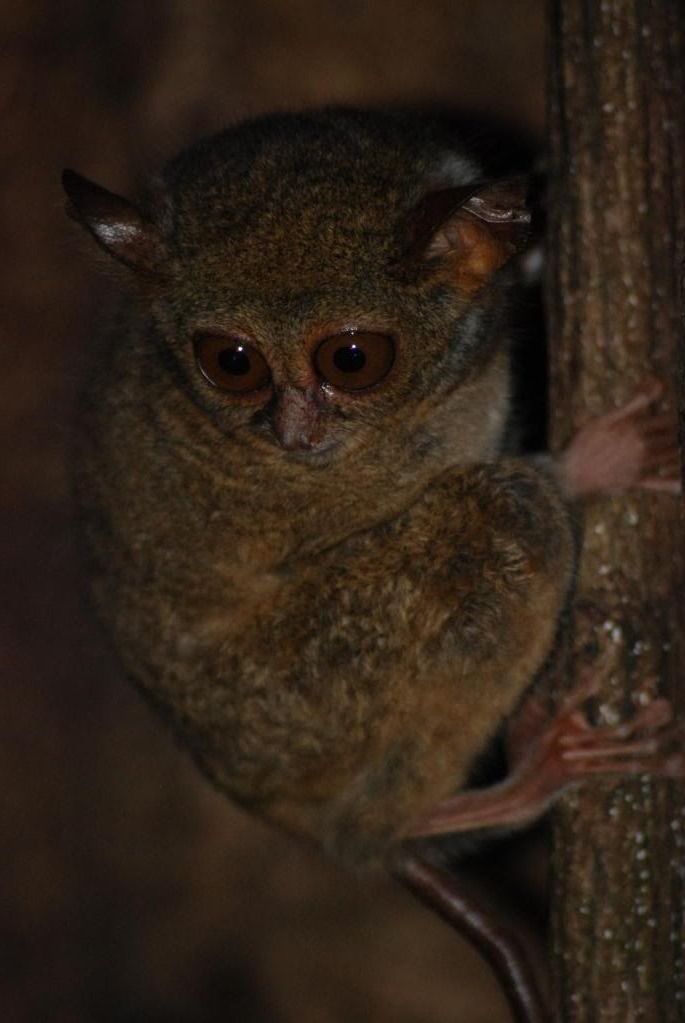
Western Tarsier - no flash
Tangkoko has a heavy researcher presence, mainly following the macaques (there are only 1000 left); it turned out there was a French and an English girl doing projects on tarsiers and black-crested macaques respectively for masters at Plymouth. They were a good laugh and, with the help of their gay Indonesian field assistant (who took a shine to me), we all got a bit merry that night on Bintang beer and a plastic bag of 'chaptikas' - some kind of palm-related distilled alcohol, essentially paint stripper. I was pretty ill that night and amazed myself by getting out of bed at 5.30am the next morning to go on a trek to look for the macaques - I threw up several times en route.

Black crested macaque
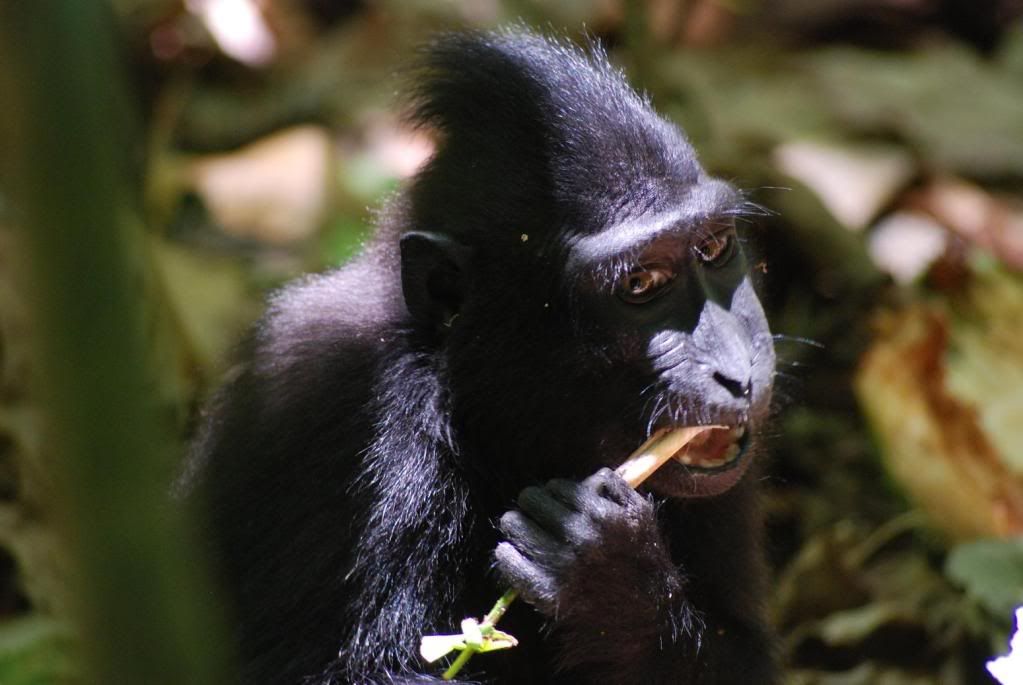
The trek was worth it however - we say a red knobbed hornbill feeding it's mate as well as more tarsiers, one of the macaque troops and a huge strangler fig tree. Each time we stopped to look for things (most notably waiting for the hornbill) I caught up on a few winks.
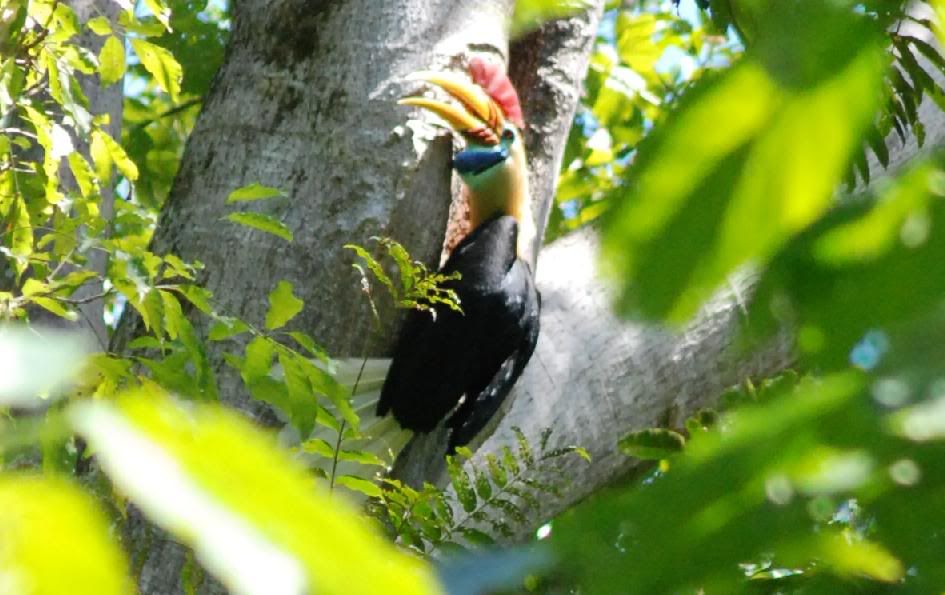
Red knobbed hornbill

Very hungover, up a tree
After the trek we headed back to Manado with the researcher girls. I was a lot better by the evening, and we all headed out (including my new wannabe-boyfriend) and saw some live music and played pool at an excellent, if rather expensive, club in Manado. I escaped the evening sober and boyfriendless (phew!).
The next morning Ash and I went our separate ways; I caught a shared Kijang (4x4 people mover) to Gorantalo, a town on the southern coast of the northern peninsula. From there I hoped to find a ferry leaving that evening to the Togean Islands - a series of small tropical islands just south of the Equator, in the gulf of the letter 'G". It went very well - except that I got to the port and found that the ferry was leaving a day later than planned. This is Indonesia after all, where jam karet - rubber time - rules the roost.

Wakai
The next evening's ferry to the Togeans was wonderful - large, mostly empty, pretty solid - everything an Indonesian ferry is reputed not to be. I slept by myself out on deck. We pulled into the small, basic town of Wakai the next morning and a boat was waiting from the dive resort I had contacted in advance - soon I was ensconced in a large, airy beachfront bungalow replete with double bed, hammock and running water (3 times in a week anyway....). The owner, sadly, had taken a leaf out of the Lembeh chap's book and really could not have been more disinterested if he tried. Fortunately the rest of the staff and guests were lovely and I had a fabulous stay. I did a few dives over at Una Una, a large atoll nearby - better than Bunaken, in my humble opinion. There was no trash and lots of big stuff including some great eagle rays.
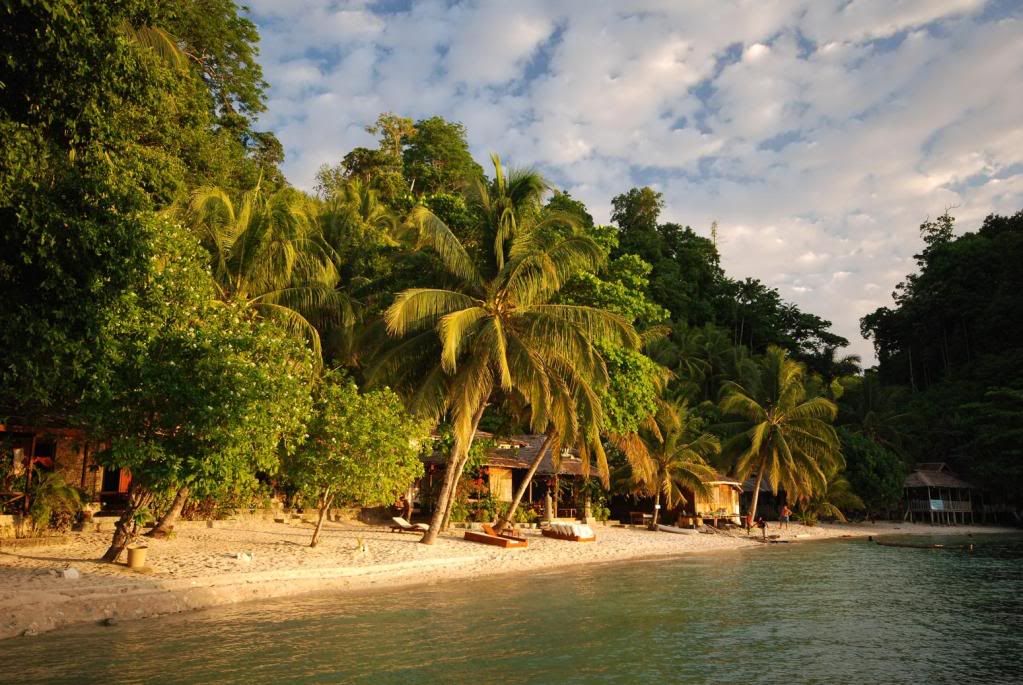
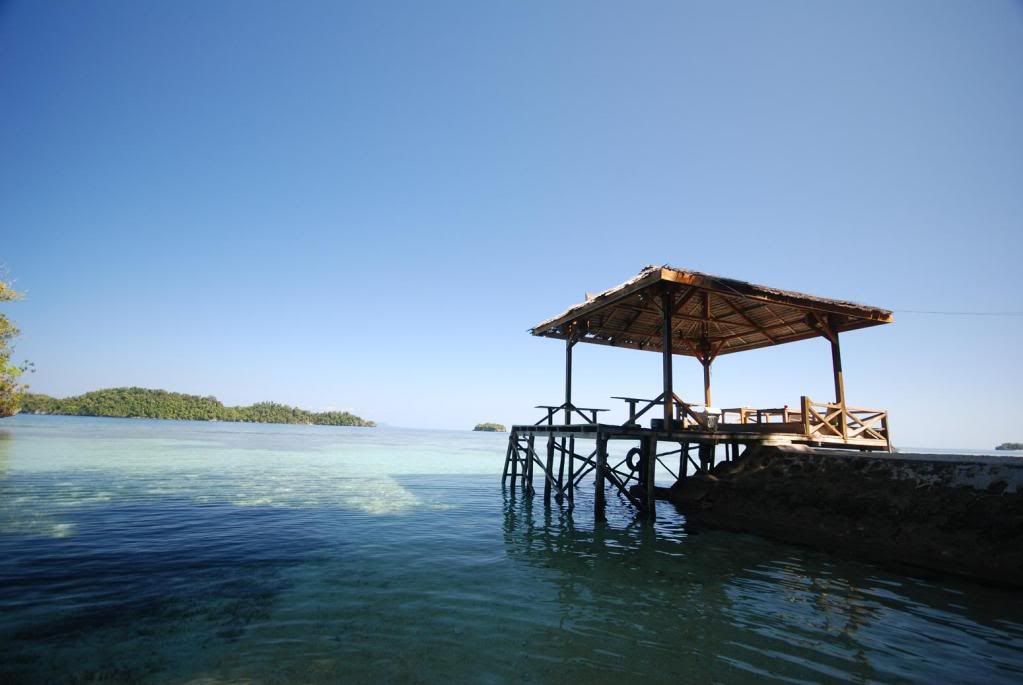
My underwater highlight was diving the wreck of a WW2 B-24 bomber that sank intact after a crash landing - some windows are still there, and the top and tail guns are present on an incredibly well preserved fuselage and wings. It was marvelous - reading the entire original crash report before the dive made it even better. I dived once with the next-door outfit (worst enemies with my place) - their dive instructor was a nice-but-slightly-crazy French chap I had met in Komodo (he wasn't as crazy when faced with responsibility!)


I woke up one morning to find my bar of Dove, which I had hoped would last for some time, gone. In the end I just couldn't blame the multitude of hermit crabs that seemed to love my bathroom (no idea how they got in) but apparently, certain rodents have been known to eat soap for the oil content..... blasted palm oil again!!
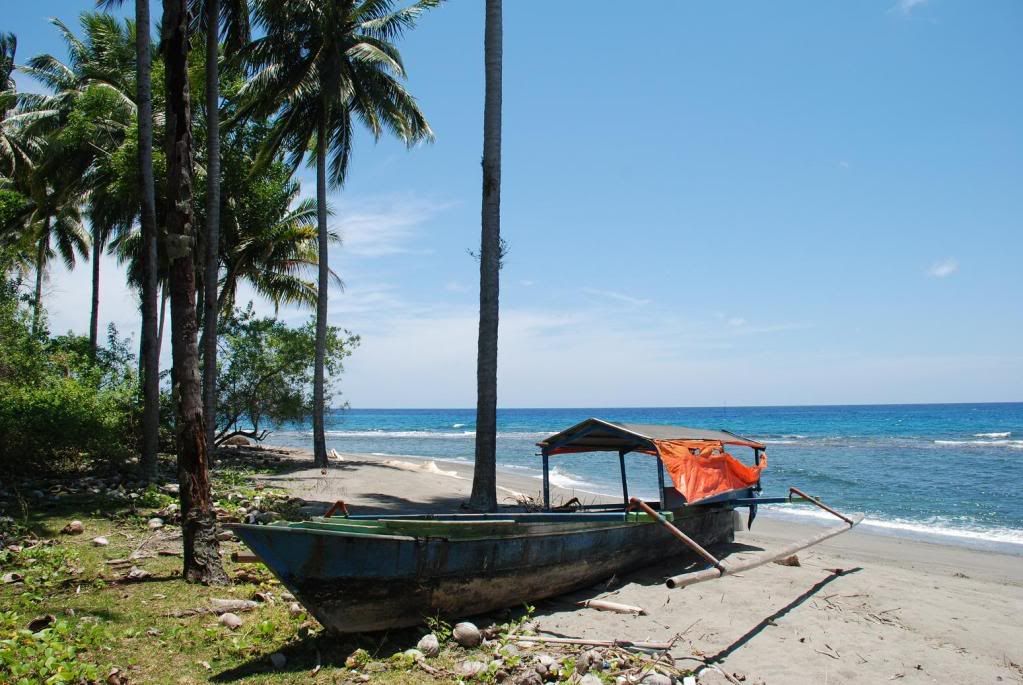
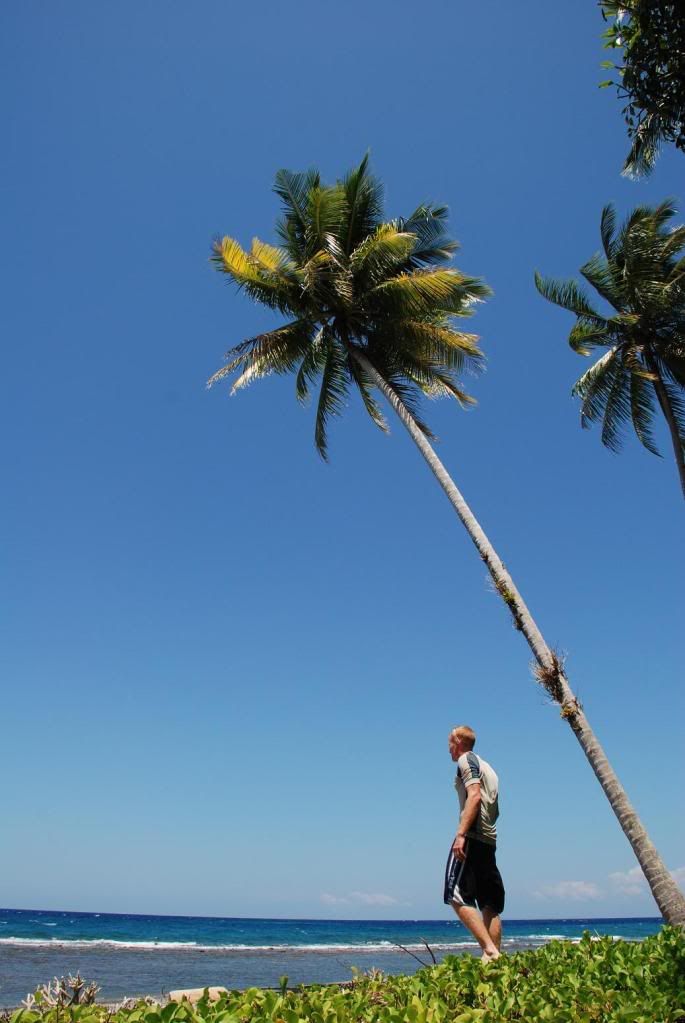
I've also been hearing a little about healthcare on Sulawesi - initially up in Bunaken, where the main Manado hospital sounds woeful and I was dishing out advice on dealing with bamboo puncture wounds (not one of my stronger areas). In Togeans I almost fell over laughing when talking to Alice, the French dive master; she was feeling tired all the time so went to the local Wakai doc for a check. He diagnosed low blood pressure and advised increasing both alcohol intake and smoking more as a sure-fire way of combating the problem. Well, I guess it would work.....
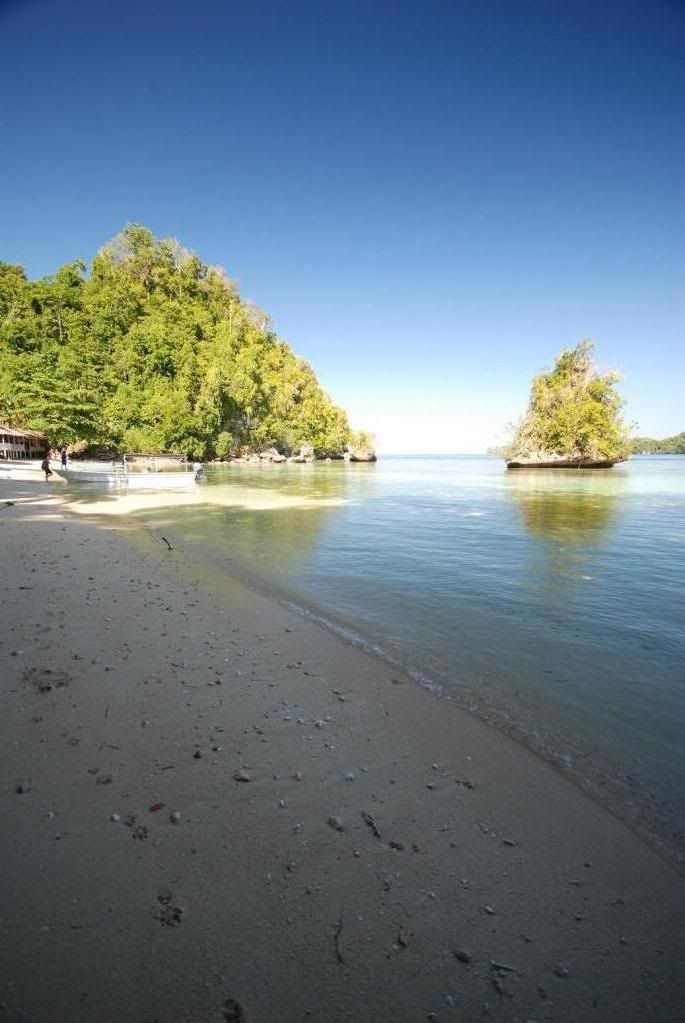
My next move southwards to Tana Toraja promised to be difficult traveling by myself but the resort owner pulled his finger out and sorted me out a chartered car from the mainland ferry port to the town of Poso where I could get a connecting bus same evening, to Toraja. It meant shelling out US$50 on the car but I figured it was worth the time and hassle saved. Sadly, I didn't figure on the connecting bus on being the invention of a local tout - so I found myself in Poso, $50 poorer, about to get on a bus to somewhere I didn't want to go for double the correct fare. Such is life.
Getting stuck in Central Sulawesi was not something I had hoped for. In 2000 violence broke out between Christians and Muslims in the area and continued for several years, resulting on over 1000 deaths. Nowadays things are much calmer, but sporadic bombings and random attacks make it a place where "caution should be exercised" whilst traveling.
Luckily, a little Indonesian guide Johnny who was heading the same way stepped into the fray and offered to take me to a homestay, and put me on a correct bus tomorrow. He came up with the goods - the homestay was cheap and the meals tasty, and I gave him a nominal amount for all his trouble - which turned out to be a lot.
When it came to 2pm the next day and the Toraja buses were due, the tout reappeared (I was waiting at the roadside, 3 km away from the terminal), desperate that I go to the with him, and pay double the correct fare to find myself en route. I didn't want to (there was a lack of trust which he failed to appreciate); the tout delayed 2 buses by 2 hours just to try and make me go to him. I didn't, and Johnny took me further out of town where eventually, out of the tout's reach, we flagged down a Toraja-bound bus and I hopped on for the right money.
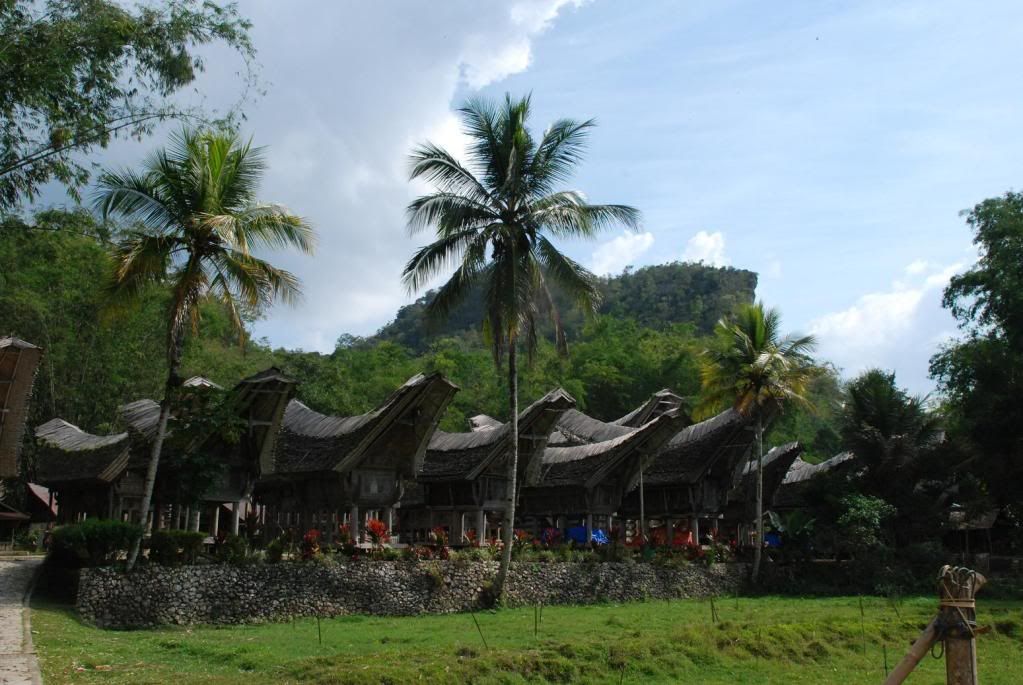
Torajan-style rice barns
Cue, of course, a very cosy back seat shared with various travel-sick locals who all are able to vomit on you when needed. The road was narrow and windy put fairly well paved most of the way - lucky as I had enough vomit to deal with, without being ejected from my seat each time we went over a bump.
The Toraja regency - or Tana Toraja - is a unique and justifiably famous highland area of Sulawesi. When first 'discovered' by the Dutch, it lacked it's modern single identity but groups of villages had very similar traditions relating to their animist beliefs, characterized by elaborate life and death celebrations. Christian missionaries - invited by the Dutch to try to stop the spread of Islam - by and large failed to convert the population, but attacks by the lowland Muslim population to the south in the 1930s succeeded where they failed and by 1940 most of the Torajan population was Christian. The emerging cultural identity of the Toraja was cemented by the Dutch who created the Toraja regency, although this went hand in hand with gradual decrease in elements of traditional ceremonies, most notably in the 'life' ceremonies.

At a funeral
Nowadays, during the dry season of July - September, funerals lasting days are held for people who have died in the last 1-2 years. The dead are kept in their traditional tongkonan homes (very reminiscent of Sumatra's Batak style) until then; the funerals are marked by processions of people from surrounding villages paying their respects, and the slaughtering of huge numbers of pigs and buffalo, the meat of which is distributed to the guests.
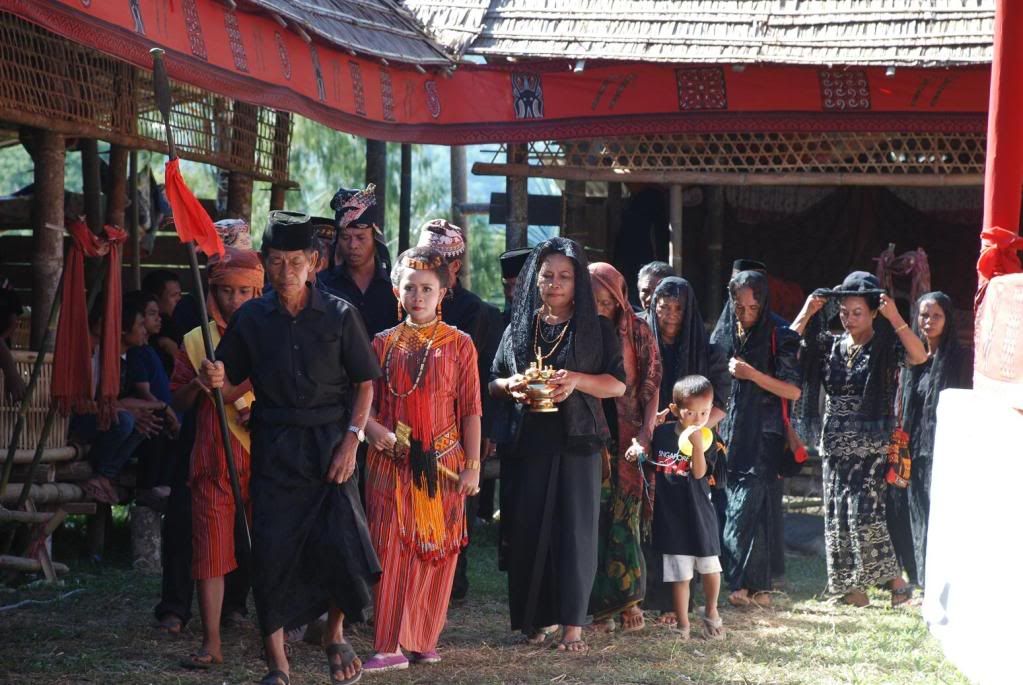
Village procession paying their respects
I arrived in Rantepao, in centre of Tana Toraja, needing sleep very badly. Unluckily for me it was the once-weekly buffalo market and an extra-big funeral starting the same day, which meant no rest for the wicked. I engaged the services of a guide in my hotel who took me to the market - it was fascinating, but sadly there was no time to dawdle as we had to be getting to the funeral some 17km away in his own village. The funeral was an experience - 2 brothers, who both died around 18 months ago, makes for a very special celebration.
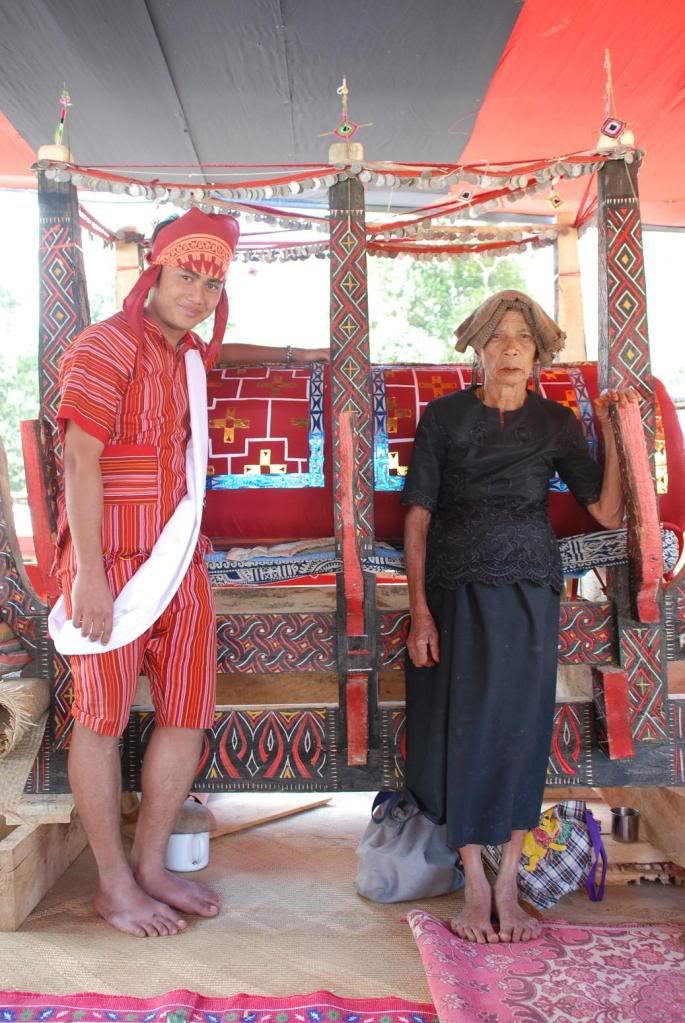
One of the dead with next of kin

The costs involved in the funerals is mind-boggling for anywhere, let along Indonesia. The price of a coveted 'albino' buffalo (the more white the better) at the funeral I attended was 160,000,000 rupiah - some 10,000GBP. Considering that there are often 50 buffaloes slaughtered, it quickly becomes an incredibly expensive undertaking. Where the money comes from was something I asked but didn't really get a straight answer - the best I heard was that the Torajans often return home from other parts of Indonesia where they work in corrupt government and make a lot of money (that seemed quite brutally honest).

Prize buffalo
Seeing 'genuine' traditional ceremonies anywhere is always a bit of a minefield - it is hard to say what is put on for tourists and what is not. In the case of Tana Toraja, I thought the jury was out. There was no question that the ceremony itself was genuine - 2 dead people, hundreds or mourners, a vast amount of money spent. But I was left wondering to what extent the application of a regional identity - initially by the Dutch and subsequently exploited for tourism - has influenced the size and cost of these proceedings. Tourism was big business here back in the 70's - nowadays it is a lot smaller than it used to be - and at the same time the Torajans were becoming aware of their own unique culture; my feeling was that tourism influenced the extravagance of ceremonies initially and that extravagance had not ceased when tourism declined.
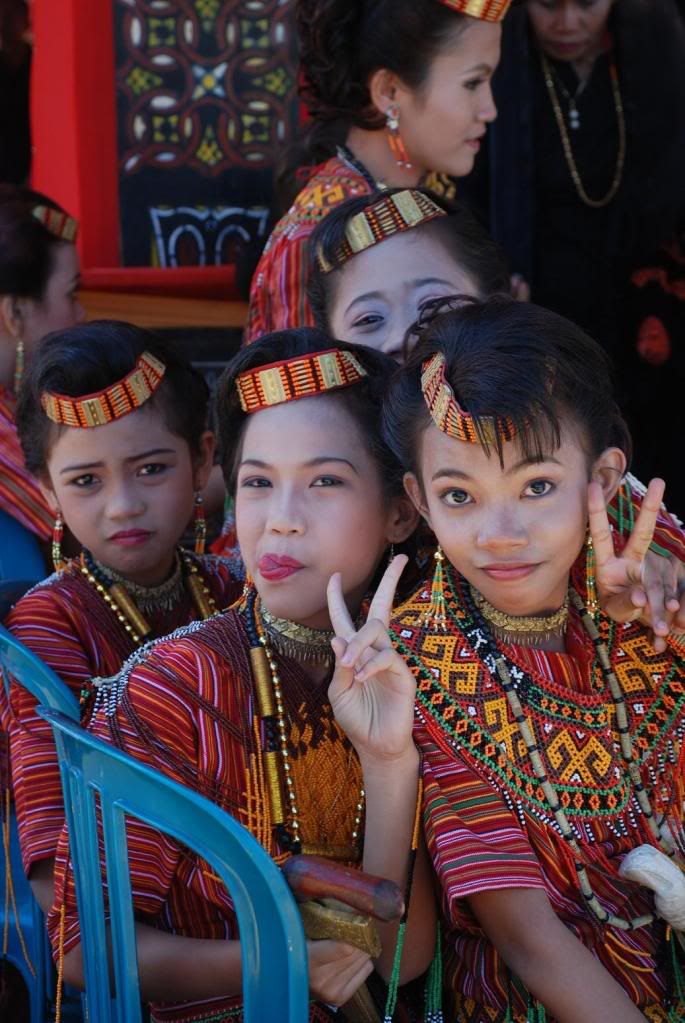
Grieving grandchildren
After several hours at the funeral (and a short snooze) I took some more photos and got talking to the video and camera people there. I arranged to return the next day and promised that at the end of the funeral (it was scheduled to be 5 days long) I would burn a couple of CDs of my pictures. The mourning family members - there were a lot - thought it was great to have a bule (white guy) taking photos of them and would then queue up to take photos of me. I was the only tourist and my guide had made himself suitably scarce; in no time I was confident that by arriving by myself the next day I would be accepted, if not welcomed.
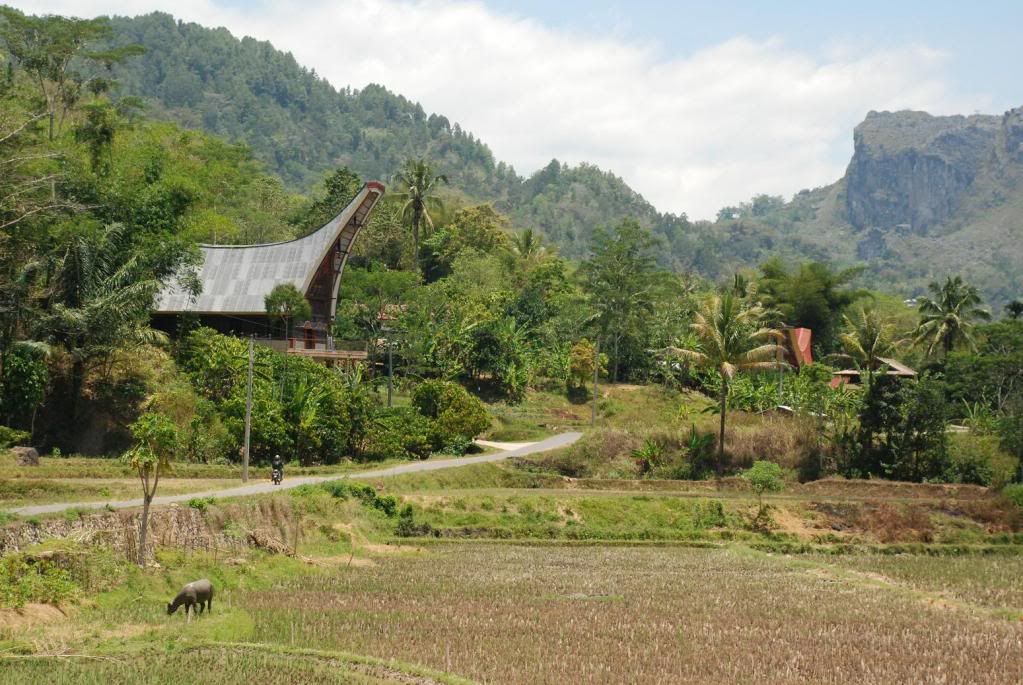
Tongkonan style church
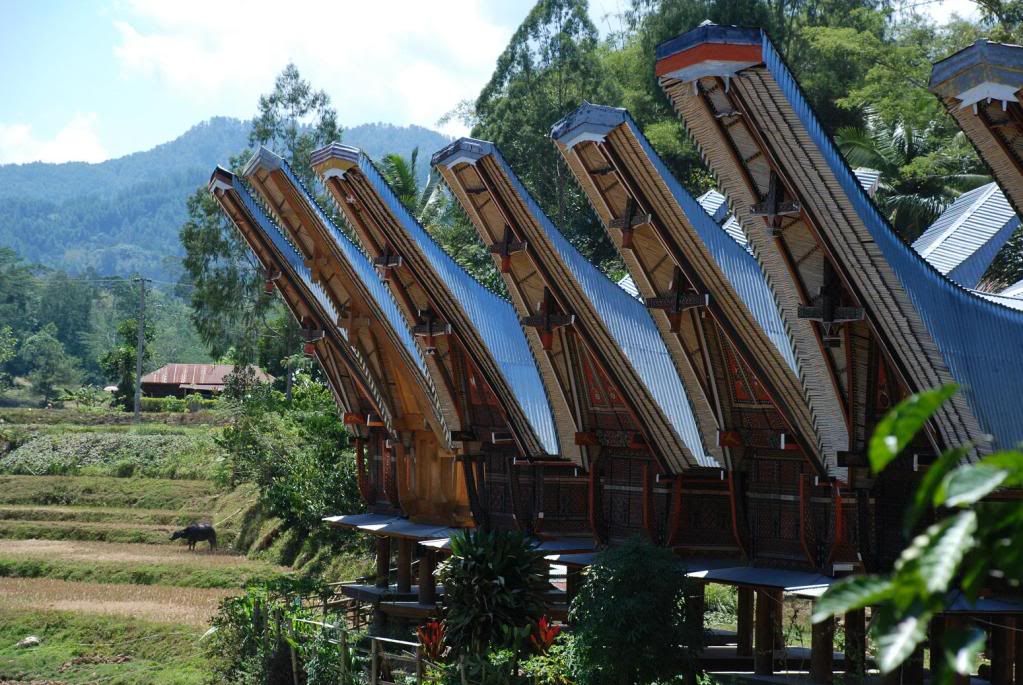
Tongkonan style rice barns
The next day I hired a motorbike and got back to the funeral around midday. After the obligatory rounds of photos with the apparently grieving grandchildren I was dragged over for some lunch - rice plus the local delicacy of fried pork fat. I did my best to disguise the fact I nearly retched each time I forced a piece into my mouth. The day was quiet by and large - a single buffalo and a lot of pigs were slaughtered, and I spent most of my time posing for photos. Everyone got very excited when there was an organised buffalo fight - not my cup of tea but very spontaneous and quite exciting for all the wrong reasons.
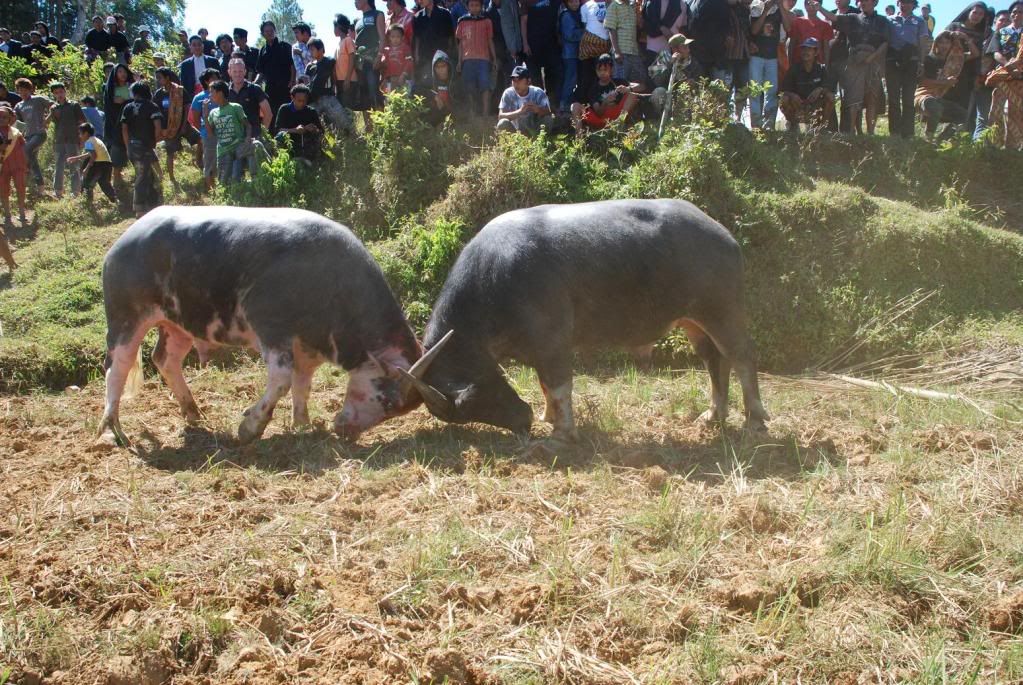

Just what kids should do at funerals - sort through piles of pig intestines.....
I was reliably informed by a nephew of one of the dead men that the main buffalo slaughtering would be in 2 days time on the 19th, so I promised to return them and spent the next couple of days exploring other parts of Tana Toraja on my trusty motorbike (this time with helmet included).
In the past Torajans have 'buried' their dead in a number of inventive ways. Babies or young children are buried in trees - possibly in caskets exactly how I am unsure as I didn't see anything to convince me it was a 'grave'.
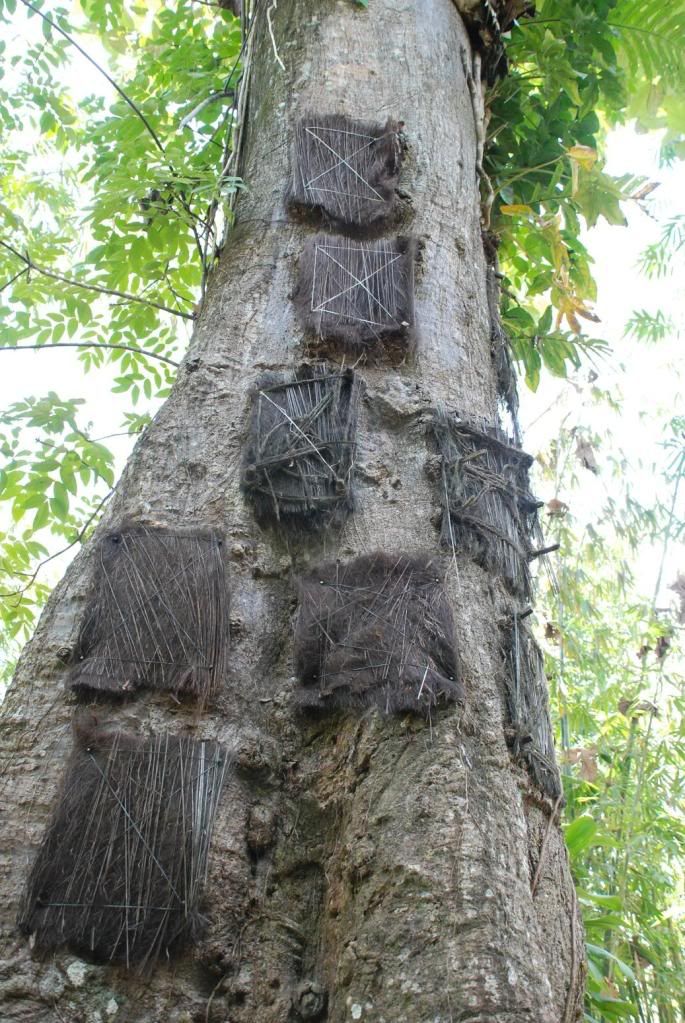
"Baby graves" - go figure
An older child or adult has several options. The first is to be buried in a grave carved deep into a cliff face, the grave being sealed with a door and an effigy or tau-tau of the deceased placed on a balcony somewhere on the cliff.
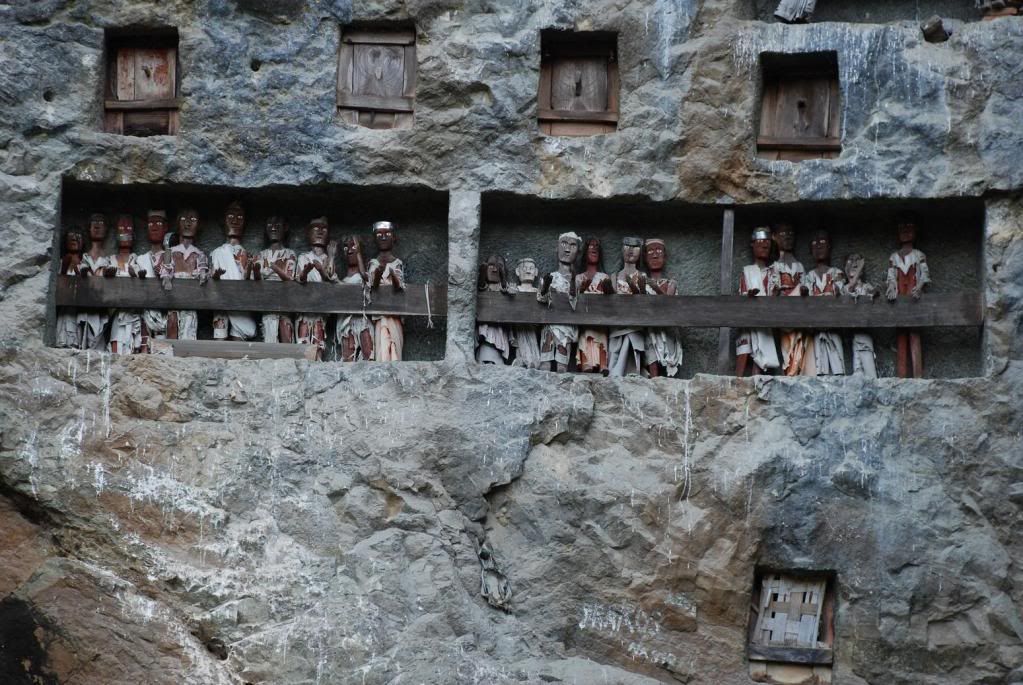
Cliff graves and tau tau
The second option is for coffins to be 'buried' in caves - often stacked high on top of each other when room is lacking; there are sometimes tau-tau too.
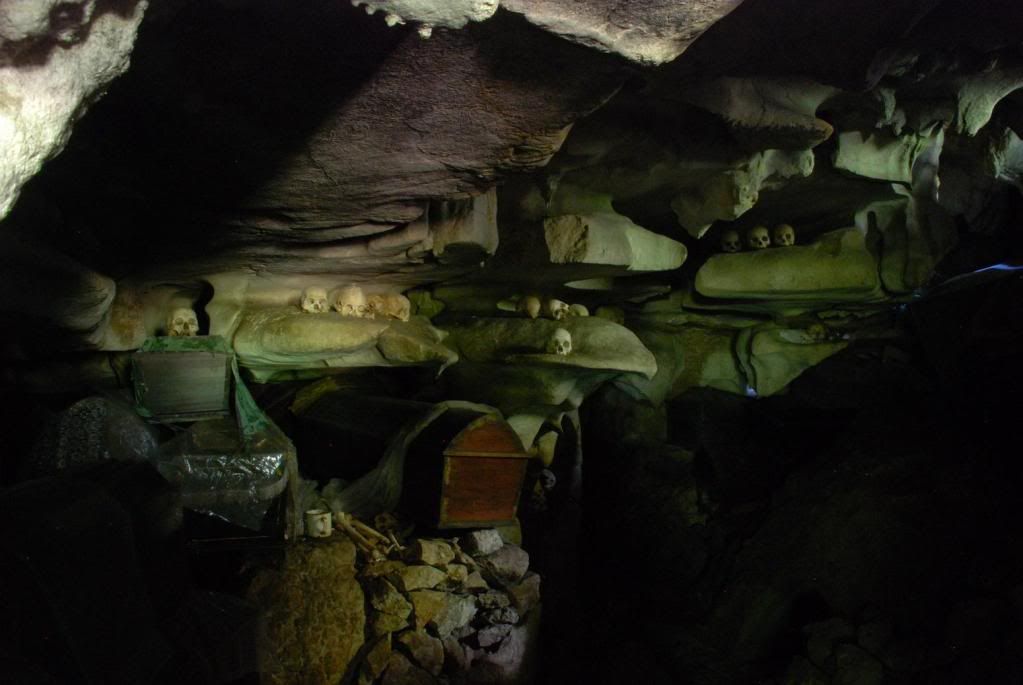
Graves in a cave
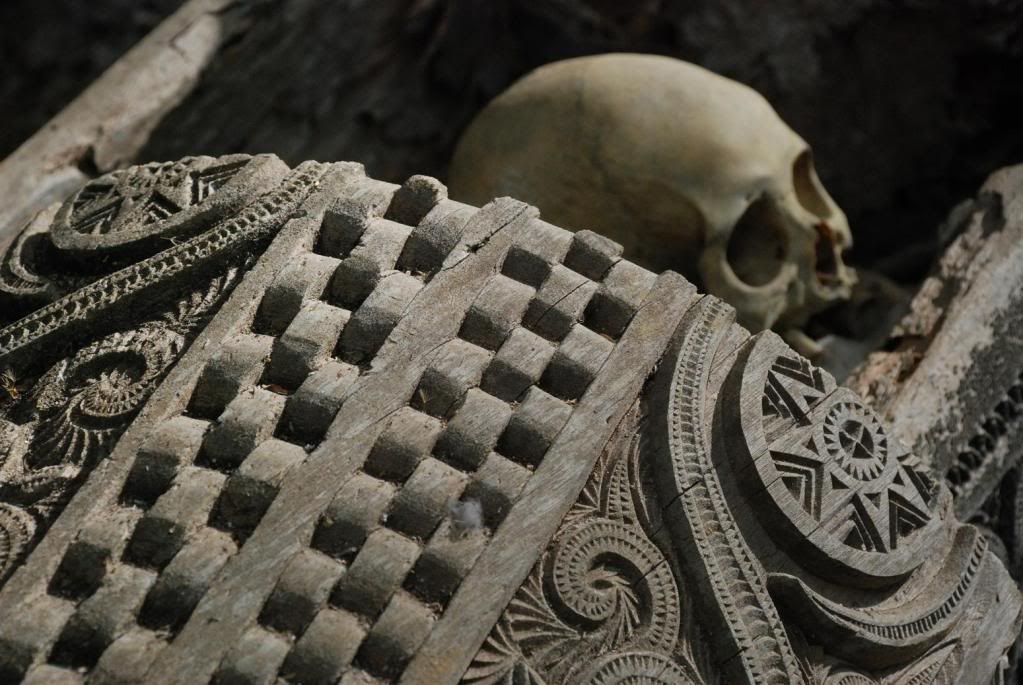
Coffin detail
The third option is the 'hanging grave' - the coffin is balanced on struts inserted into the cliff face, effectively suspended in the air. This is often seen on cliffs which also have cave graves and cliff graves, and tau-tau are often present too. In the past many tau-tau have been looted for Western collections, and the effigies tend to remain in the family house now rather than on display.
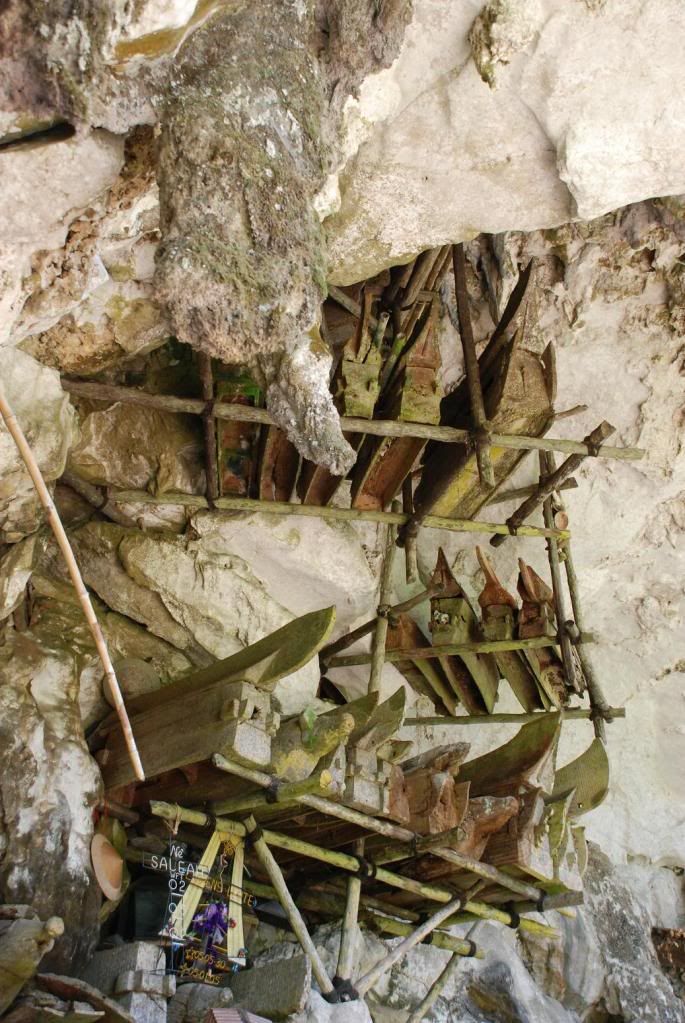
Hanging graves
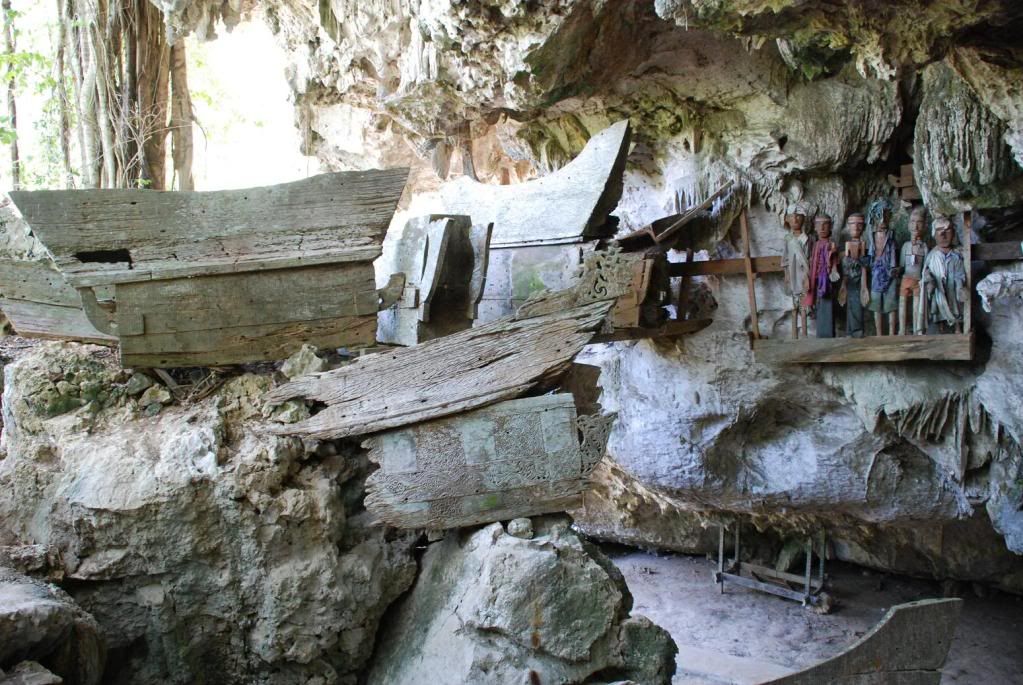
Hanging graves and tau tau
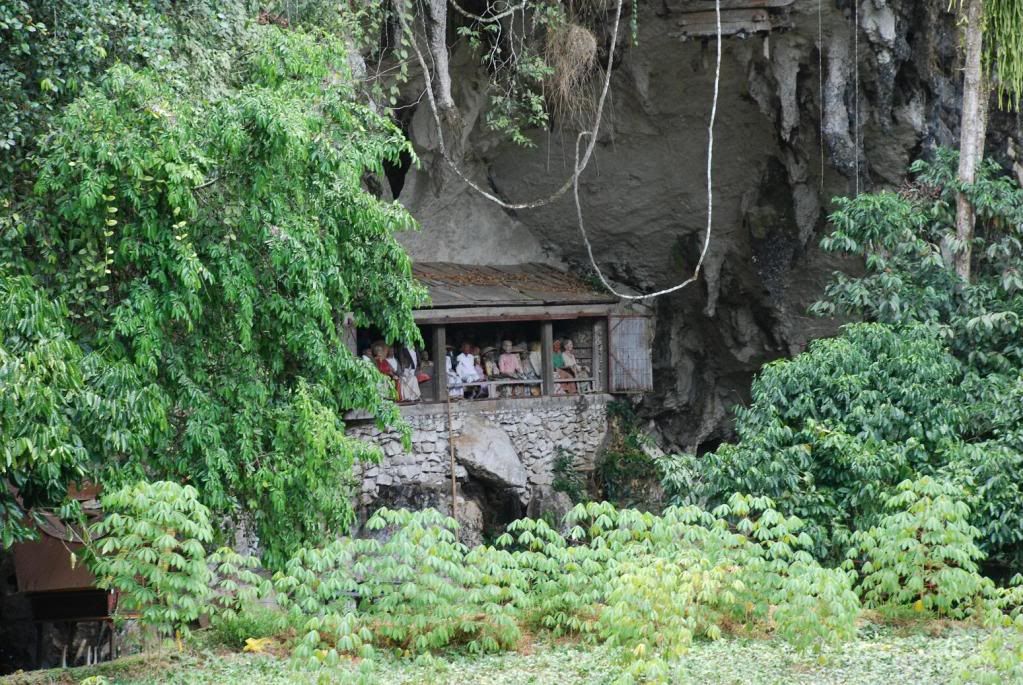
Tau tau at a cave grave
After a couple of days of touring the various sites south of Rantepao I felt that I had a fairly good grounding of how to bury dead people in Tana Toraja. It seems sad that the 'life' ceremonies seen when the area was first discovered have died out - they were reputedly just as grand and rather less morbid.
I returned to the funeral as requested on the 19th, only to find jam karet had been at work. It was easy to see that most of the buffaloes had already been killed the day before; I arrived at 7am in time to see a couple of the last (and most impressive) buffalo slaughtered in a manner that made me cringe. On reflection I was glad that I had missed the main event - though I have enough photos (at the end of this post) to give you a pretty good idea of what happens.
After the slaughtering I headed back to Rantepao to burn the promised CDs and then returned to find a full religious ceremony in progress. After the funeral service - as we would understand it - there were the obligatory photos before the coffins were moved on.
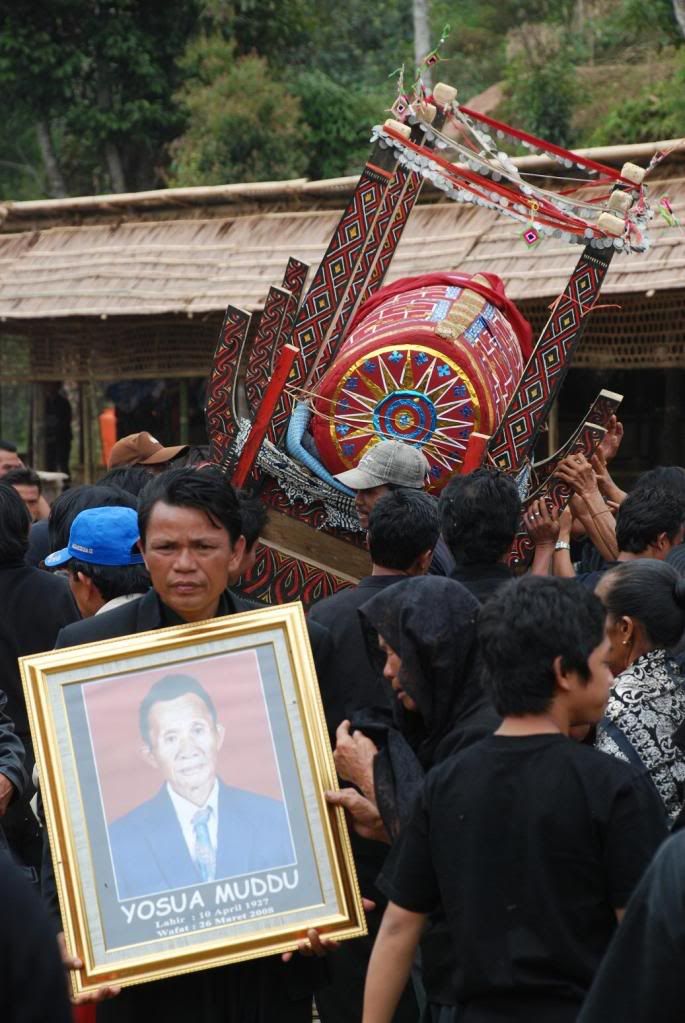
The coffin is picked up....
What followed was a bewildering and entertaining 'procession' to the burial site. The large and intricate coffins on their biers were picked up by a mob of howling youths who took great pleasure in giving the coffin "the bumps" and generally manhandling it. It was thrown and tossed around all over the place; several times it was dropped, much to the disgust of the close relatives. It was different in the extreme, and reminded me rather of Shrovetide football in Ashbourne (the coffin being the football). After that it really was time to go, and I headed back to Rantepao and my second to last night in Sulawesi.
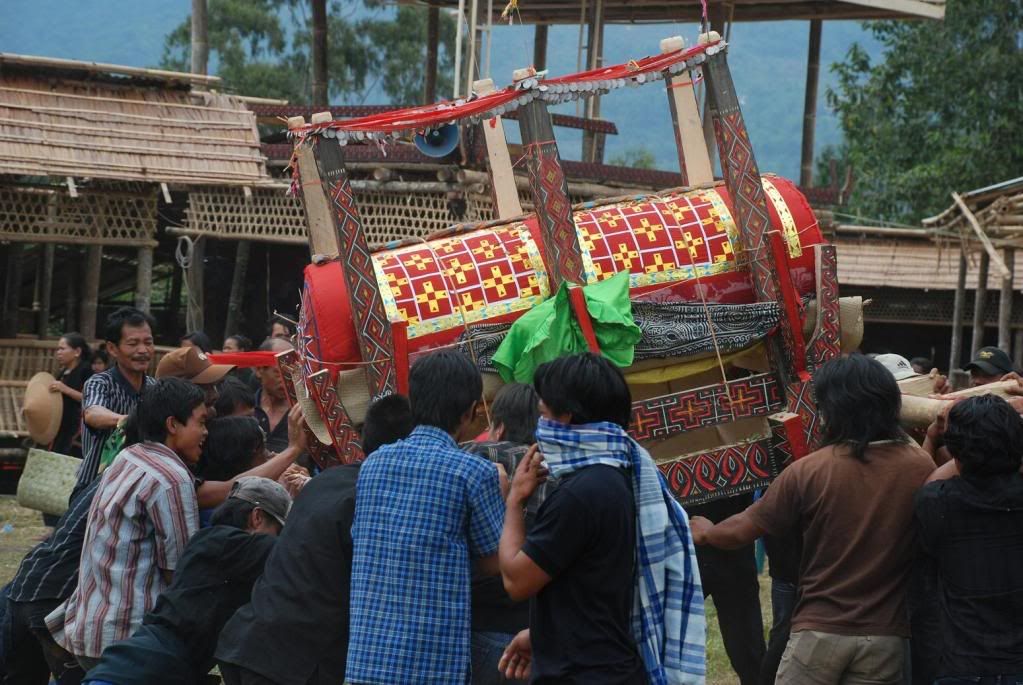
... and then mandhandled. A lot. And dropped.
My final day in Sulawesi I headed up into the hills north of Rantepao for a walk. After getting dropped off in a small village with a line-drawn map and a couple of names in my head, I made my way through stunning scenery of terraced rice paddies studded by volcanic boulders, and interrupted by villages full of typical tongkonan and rice barns. It was beautiful. I got back tot Rantepao in time for a shower and to pack, plus have the most delicious 'traditional local meal' (there are a lot out there) I've had in South East Asia - shredded buffalo plus veg and spices stuffed in bamboo and cooked over a fire. There was so much I could not finish it, but it was lovely.
That evening, I hopped on a night bus to Makassar, planning to get off at the airport hopefully some 4 hours before my flight to Bali was due to leave. It was Idul Fitri (as it is spelt here), the end of the fasting month of Ramadan. The busy roads and packed buses failed to materialise (traveling then is a bit like spending Christmas Day in the car) and I arrive 2 hours earlier than planned - at 3am - at the airport. I'm back in Kuta, Bali now; this evening I have my first of 3 flights that will see me arrive in Queenstown, South Island, New Zealand, where I am seeing Jen and Fran on the 23rd.
If you are squeamish, I would stop reading now. Below are the photos of the traditional slaughter of the pigs and buffalo at the funeral. They are inhumane and pretty unpleasant - but this is real life, and this is how they do it.
Scroll down to have a look.....
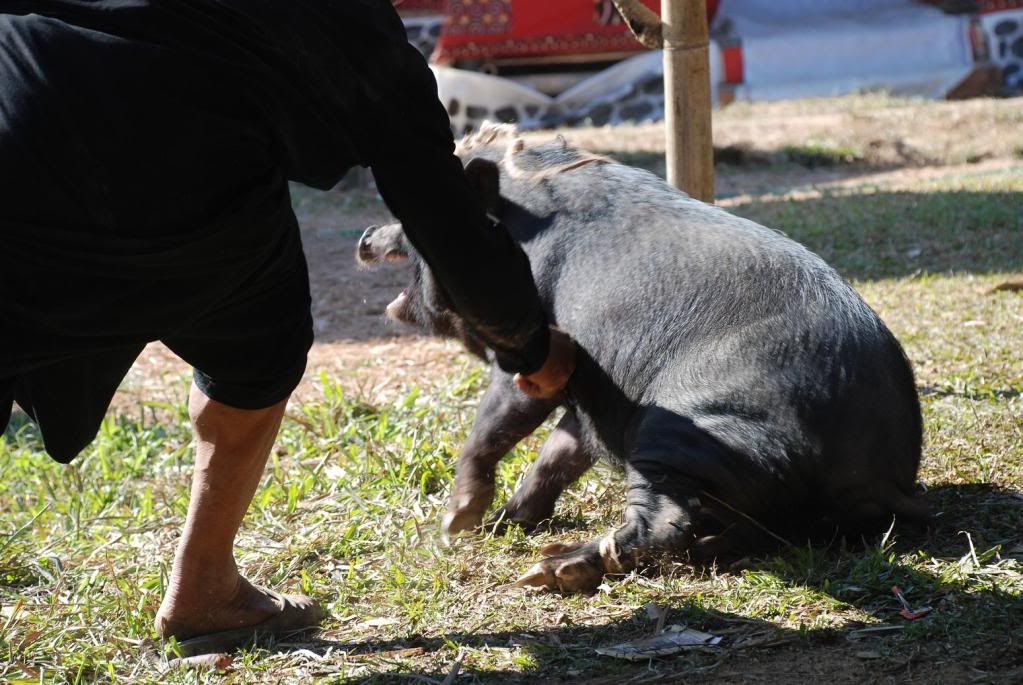
Pig being 'stuck'
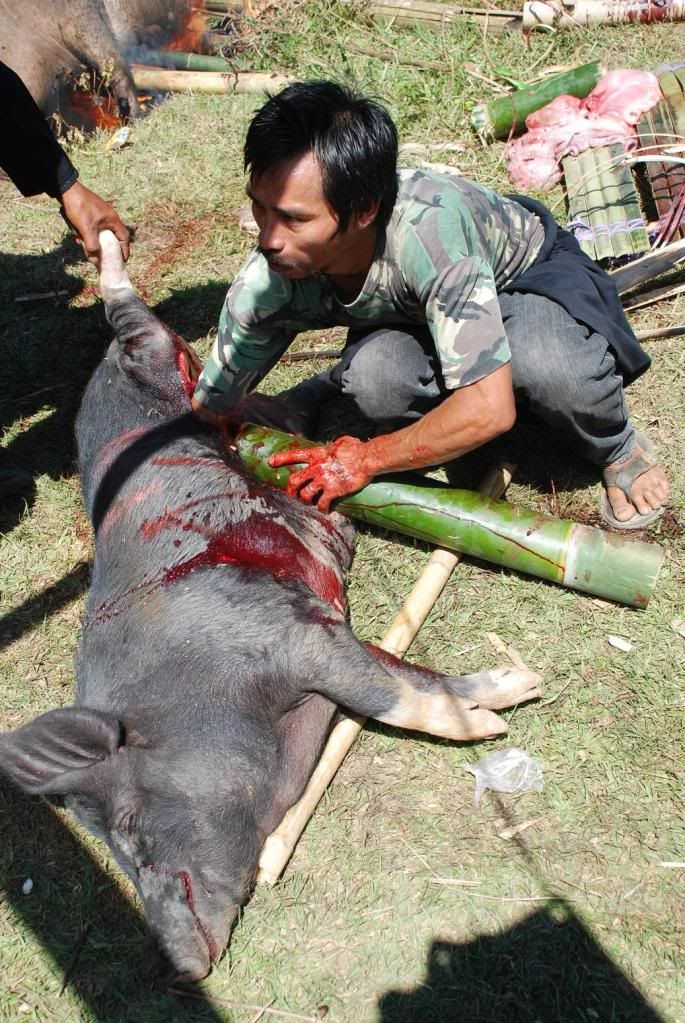
Pig being dressed
And... buffalo slaughter series
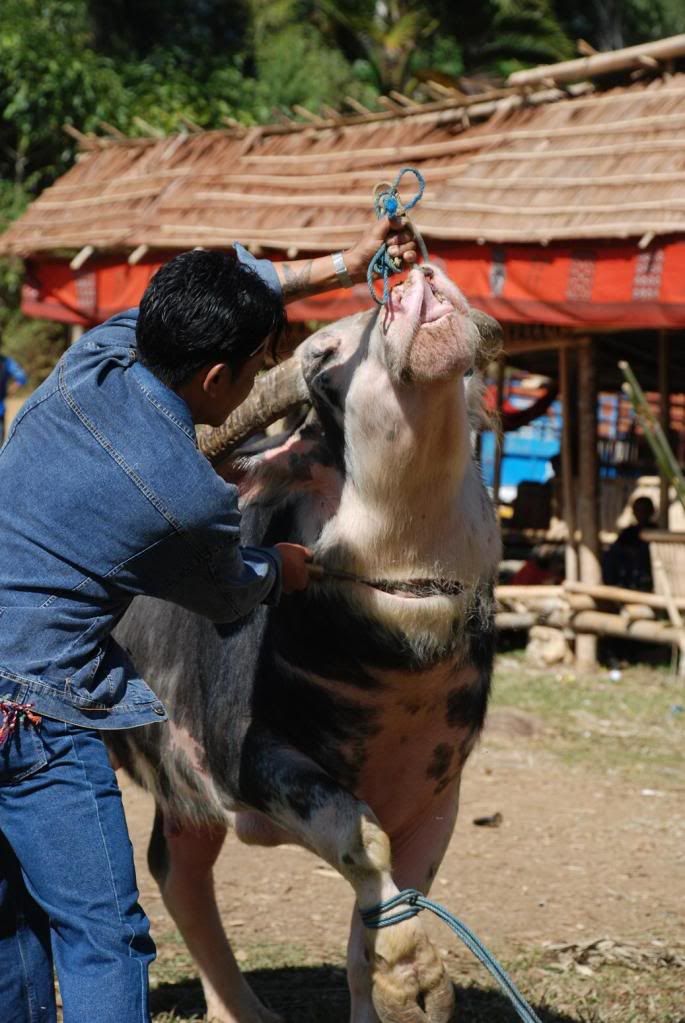
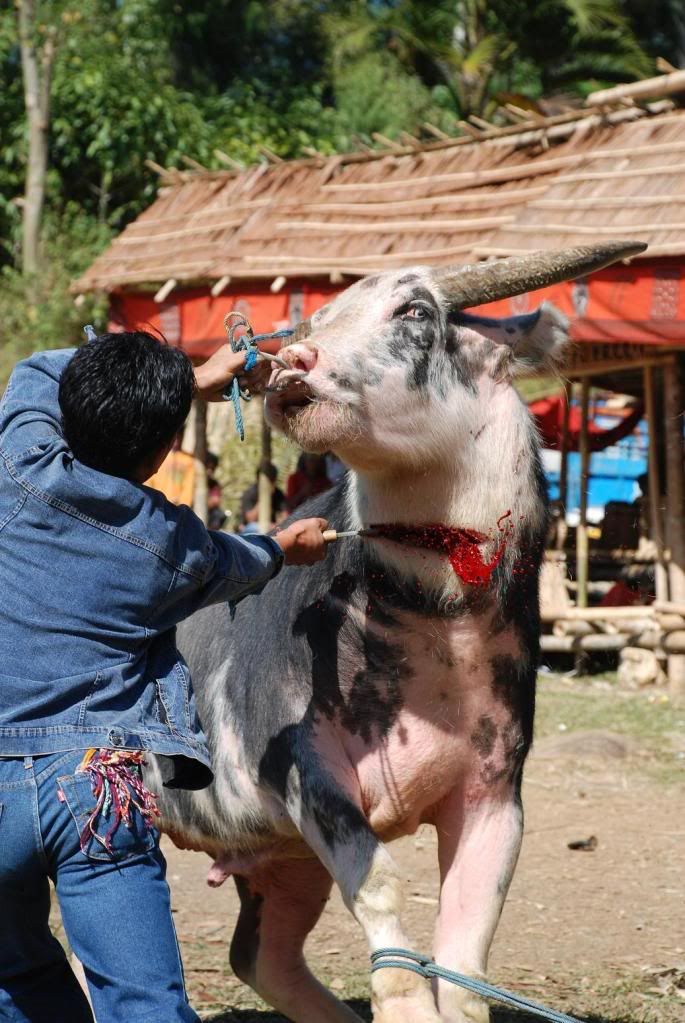
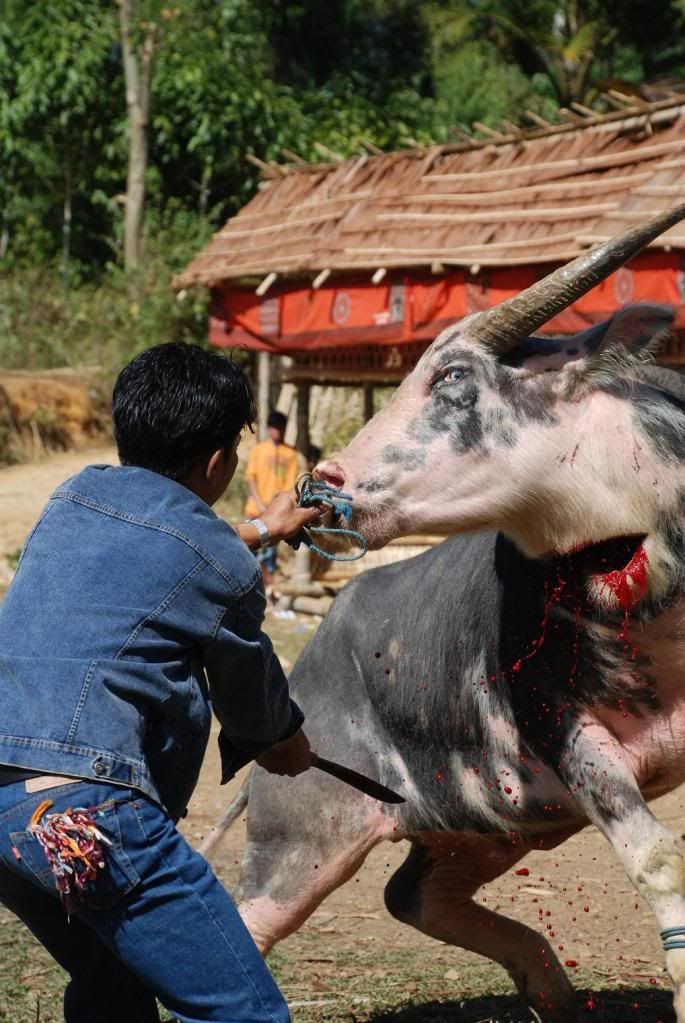
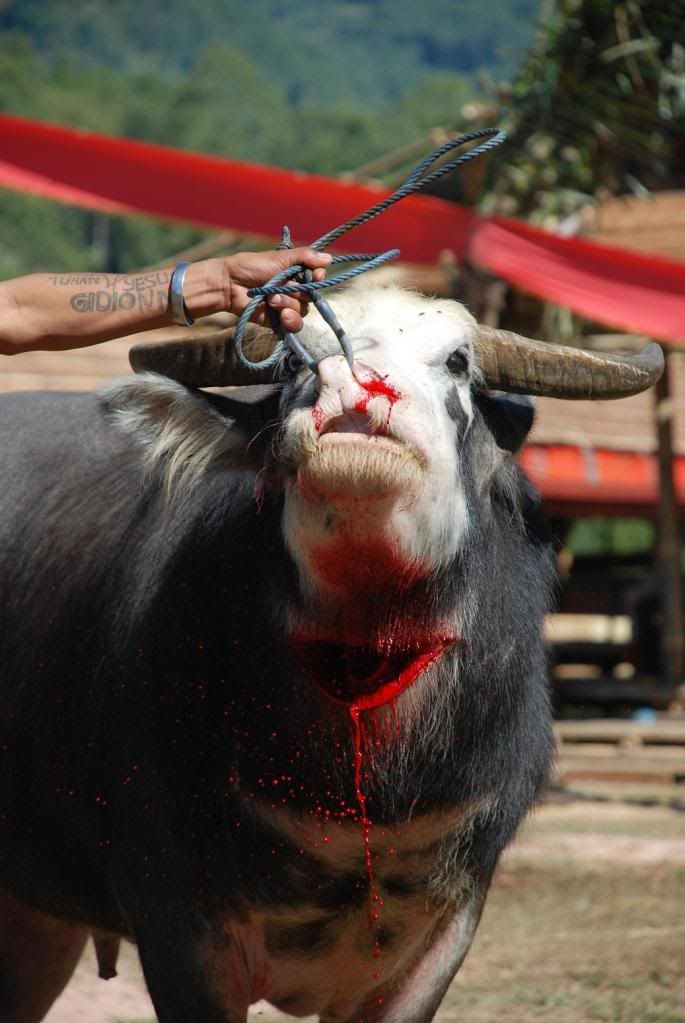
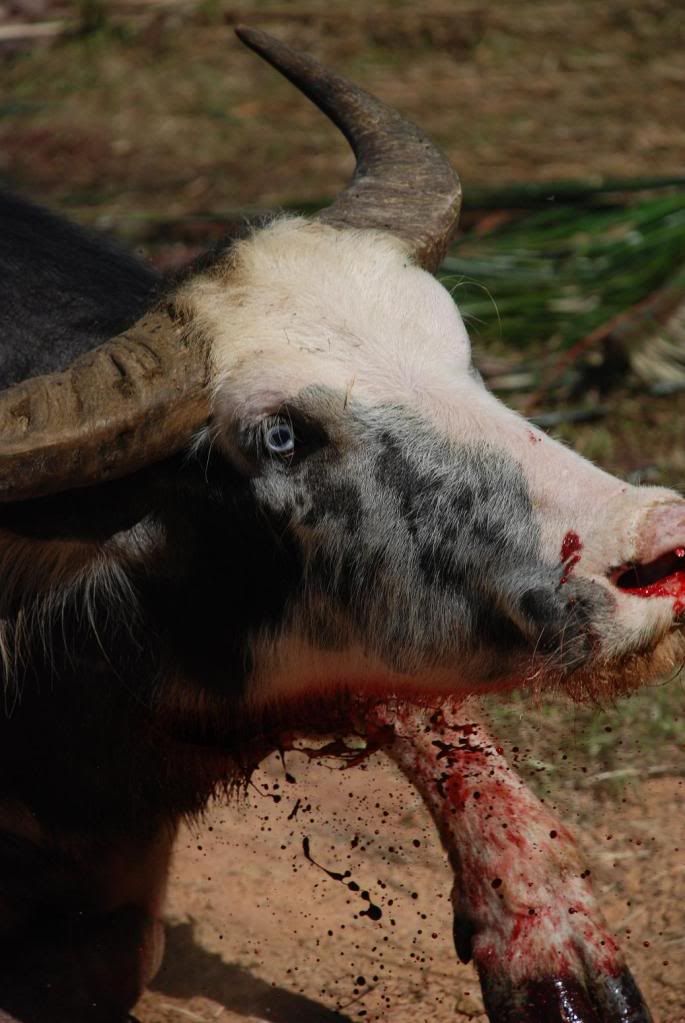


Bunaken, our first destination, is only an hour from Manado by boat and sadly receives a lot of sea-borne trash both from Manado city and larger currents that come from southern Sulawesi and eastern Borneo. In the wet season the rubbish can be 2 feet deep on the western beaches; although it was dry season we opted to stay on the eastern beaches at a little place called Lorenzos. On the way we teamed up with 2 French girls with a similar diving fixation; leaving from the island as we arrived were Andrew and Natalia, the English couple from my Kinablu trekking group.
Lorenzos had a great, laid back family atmosphere; often as the guests ate together around a single large table the local house band would strike up. Their homemade instruments were fabulous - my favourite was bass which sounded great.

The diving - which so many people rave about - was extremely pretty but after 6 dives I was finding it a little boring. There was a lot of floating rubbish and very few big fish; it was superb if you like looking at the small stuff but overall it was not as good as I had heard or hoped.
After a few days Ash and I cleared off to Lembeh for more diving via an expensive charter car - sadly the locals in north Sulawesi have clocked onto the fact that most tourists are divers who are happy to pay US$35 for a 1.5 hour taxi ride and charge accordingly.
The Lembeh Strait is a unique spot for diving. A couple of decades ago someone wanted to build a beach resort in the Strait; whilst surveying the seabed for piles for the jetty the divers noticed some unusual critters on the sandy bottom, and took some photos. Those photos found there was to an American university where they could not be identified - a research group was sent out and a whole array of new organisms were discovered. They are mainly bottom dwelling small creatures that you search for in the black sand bottom - the term "muck diving" was born.

Diving Lembeh was fascinating but a little scary - no dive briefings and no depth gauge (for me or Ash), plus an dive guide who didn't care. We would have said something to the Canadian owner but he clearly did not care either..... The creatures were pretty special though - from the hairy frogfish to the stargazer and pygmy seahorses. The last were wonderful little things but I can't imagine they will be around in 10 years time - the amount of stress they are put through by flash photography each day must be huge.

Western Tarsier - with flash
After a horrifically expensive 24 hours (and 4 dives) in Lembeh we headed up to nearby Tangkoko Park, home of the tiny Western Tarsiers - the world's smallest primate - and critically endangered black crested macaques - endemic to north Sulawesi. That evening Ash and I saw some very cute tarsiers as they emerged at dusk from their family 'sleeping tree', but were fairly disgusted by the other tourists taking near constant flash-photography of the wide-eyed little critters. We discussed doing some kind of research into the long term effects of this.... then later met the very researcher who was doing the project we talked out.

Western Tarsier - no flash
Tangkoko has a heavy researcher presence, mainly following the macaques (there are only 1000 left); it turned out there was a French and an English girl doing projects on tarsiers and black-crested macaques respectively for masters at Plymouth. They were a good laugh and, with the help of their gay Indonesian field assistant (who took a shine to me), we all got a bit merry that night on Bintang beer and a plastic bag of 'chaptikas' - some kind of palm-related distilled alcohol, essentially paint stripper. I was pretty ill that night and amazed myself by getting out of bed at 5.30am the next morning to go on a trek to look for the macaques - I threw up several times en route.

Black crested macaque

The trek was worth it however - we say a red knobbed hornbill feeding it's mate as well as more tarsiers, one of the macaque troops and a huge strangler fig tree. Each time we stopped to look for things (most notably waiting for the hornbill) I caught up on a few winks.

Red knobbed hornbill

Very hungover, up a tree
After the trek we headed back to Manado with the researcher girls. I was a lot better by the evening, and we all headed out (including my new wannabe-boyfriend) and saw some live music and played pool at an excellent, if rather expensive, club in Manado. I escaped the evening sober and boyfriendless (phew!).
The next morning Ash and I went our separate ways; I caught a shared Kijang (4x4 people mover) to Gorantalo, a town on the southern coast of the northern peninsula. From there I hoped to find a ferry leaving that evening to the Togean Islands - a series of small tropical islands just south of the Equator, in the gulf of the letter 'G". It went very well - except that I got to the port and found that the ferry was leaving a day later than planned. This is Indonesia after all, where jam karet - rubber time - rules the roost.

Wakai
The next evening's ferry to the Togeans was wonderful - large, mostly empty, pretty solid - everything an Indonesian ferry is reputed not to be. I slept by myself out on deck. We pulled into the small, basic town of Wakai the next morning and a boat was waiting from the dive resort I had contacted in advance - soon I was ensconced in a large, airy beachfront bungalow replete with double bed, hammock and running water (3 times in a week anyway....). The owner, sadly, had taken a leaf out of the Lembeh chap's book and really could not have been more disinterested if he tried. Fortunately the rest of the staff and guests were lovely and I had a fabulous stay. I did a few dives over at Una Una, a large atoll nearby - better than Bunaken, in my humble opinion. There was no trash and lots of big stuff including some great eagle rays.


My underwater highlight was diving the wreck of a WW2 B-24 bomber that sank intact after a crash landing - some windows are still there, and the top and tail guns are present on an incredibly well preserved fuselage and wings. It was marvelous - reading the entire original crash report before the dive made it even better. I dived once with the next-door outfit (worst enemies with my place) - their dive instructor was a nice-but-slightly-crazy French chap I had met in Komodo (he wasn't as crazy when faced with responsibility!)


I woke up one morning to find my bar of Dove, which I had hoped would last for some time, gone. In the end I just couldn't blame the multitude of hermit crabs that seemed to love my bathroom (no idea how they got in) but apparently, certain rodents have been known to eat soap for the oil content..... blasted palm oil again!!


I've also been hearing a little about healthcare on Sulawesi - initially up in Bunaken, where the main Manado hospital sounds woeful and I was dishing out advice on dealing with bamboo puncture wounds (not one of my stronger areas). In Togeans I almost fell over laughing when talking to Alice, the French dive master; she was feeling tired all the time so went to the local Wakai doc for a check. He diagnosed low blood pressure and advised increasing both alcohol intake and smoking more as a sure-fire way of combating the problem. Well, I guess it would work.....

My next move southwards to Tana Toraja promised to be difficult traveling by myself but the resort owner pulled his finger out and sorted me out a chartered car from the mainland ferry port to the town of Poso where I could get a connecting bus same evening, to Toraja. It meant shelling out US$50 on the car but I figured it was worth the time and hassle saved. Sadly, I didn't figure on the connecting bus on being the invention of a local tout - so I found myself in Poso, $50 poorer, about to get on a bus to somewhere I didn't want to go for double the correct fare. Such is life.
Getting stuck in Central Sulawesi was not something I had hoped for. In 2000 violence broke out between Christians and Muslims in the area and continued for several years, resulting on over 1000 deaths. Nowadays things are much calmer, but sporadic bombings and random attacks make it a place where "caution should be exercised" whilst traveling.
Luckily, a little Indonesian guide Johnny who was heading the same way stepped into the fray and offered to take me to a homestay, and put me on a correct bus tomorrow. He came up with the goods - the homestay was cheap and the meals tasty, and I gave him a nominal amount for all his trouble - which turned out to be a lot.
When it came to 2pm the next day and the Toraja buses were due, the tout reappeared (I was waiting at the roadside, 3 km away from the terminal), desperate that I go to the with him, and pay double the correct fare to find myself en route. I didn't want to (there was a lack of trust which he failed to appreciate); the tout delayed 2 buses by 2 hours just to try and make me go to him. I didn't, and Johnny took me further out of town where eventually, out of the tout's reach, we flagged down a Toraja-bound bus and I hopped on for the right money.

Torajan-style rice barns
Cue, of course, a very cosy back seat shared with various travel-sick locals who all are able to vomit on you when needed. The road was narrow and windy put fairly well paved most of the way - lucky as I had enough vomit to deal with, without being ejected from my seat each time we went over a bump.
The Toraja regency - or Tana Toraja - is a unique and justifiably famous highland area of Sulawesi. When first 'discovered' by the Dutch, it lacked it's modern single identity but groups of villages had very similar traditions relating to their animist beliefs, characterized by elaborate life and death celebrations. Christian missionaries - invited by the Dutch to try to stop the spread of Islam - by and large failed to convert the population, but attacks by the lowland Muslim population to the south in the 1930s succeeded where they failed and by 1940 most of the Torajan population was Christian. The emerging cultural identity of the Toraja was cemented by the Dutch who created the Toraja regency, although this went hand in hand with gradual decrease in elements of traditional ceremonies, most notably in the 'life' ceremonies.

At a funeral
Nowadays, during the dry season of July - September, funerals lasting days are held for people who have died in the last 1-2 years. The dead are kept in their traditional tongkonan homes (very reminiscent of Sumatra's Batak style) until then; the funerals are marked by processions of people from surrounding villages paying their respects, and the slaughtering of huge numbers of pigs and buffalo, the meat of which is distributed to the guests.

Village procession paying their respects
I arrived in Rantepao, in centre of Tana Toraja, needing sleep very badly. Unluckily for me it was the once-weekly buffalo market and an extra-big funeral starting the same day, which meant no rest for the wicked. I engaged the services of a guide in my hotel who took me to the market - it was fascinating, but sadly there was no time to dawdle as we had to be getting to the funeral some 17km away in his own village. The funeral was an experience - 2 brothers, who both died around 18 months ago, makes for a very special celebration.

One of the dead with next of kin

The costs involved in the funerals is mind-boggling for anywhere, let along Indonesia. The price of a coveted 'albino' buffalo (the more white the better) at the funeral I attended was 160,000,000 rupiah - some 10,000GBP. Considering that there are often 50 buffaloes slaughtered, it quickly becomes an incredibly expensive undertaking. Where the money comes from was something I asked but didn't really get a straight answer - the best I heard was that the Torajans often return home from other parts of Indonesia where they work in corrupt government and make a lot of money (that seemed quite brutally honest).

Prize buffalo
Seeing 'genuine' traditional ceremonies anywhere is always a bit of a minefield - it is hard to say what is put on for tourists and what is not. In the case of Tana Toraja, I thought the jury was out. There was no question that the ceremony itself was genuine - 2 dead people, hundreds or mourners, a vast amount of money spent. But I was left wondering to what extent the application of a regional identity - initially by the Dutch and subsequently exploited for tourism - has influenced the size and cost of these proceedings. Tourism was big business here back in the 70's - nowadays it is a lot smaller than it used to be - and at the same time the Torajans were becoming aware of their own unique culture; my feeling was that tourism influenced the extravagance of ceremonies initially and that extravagance had not ceased when tourism declined.

Grieving grandchildren
After several hours at the funeral (and a short snooze) I took some more photos and got talking to the video and camera people there. I arranged to return the next day and promised that at the end of the funeral (it was scheduled to be 5 days long) I would burn a couple of CDs of my pictures. The mourning family members - there were a lot - thought it was great to have a bule (white guy) taking photos of them and would then queue up to take photos of me. I was the only tourist and my guide had made himself suitably scarce; in no time I was confident that by arriving by myself the next day I would be accepted, if not welcomed.

Tongkonan style church

Tongkonan style rice barns
The next day I hired a motorbike and got back to the funeral around midday. After the obligatory rounds of photos with the apparently grieving grandchildren I was dragged over for some lunch - rice plus the local delicacy of fried pork fat. I did my best to disguise the fact I nearly retched each time I forced a piece into my mouth. The day was quiet by and large - a single buffalo and a lot of pigs were slaughtered, and I spent most of my time posing for photos. Everyone got very excited when there was an organised buffalo fight - not my cup of tea but very spontaneous and quite exciting for all the wrong reasons.


Just what kids should do at funerals - sort through piles of pig intestines.....
I was reliably informed by a nephew of one of the dead men that the main buffalo slaughtering would be in 2 days time on the 19th, so I promised to return them and spent the next couple of days exploring other parts of Tana Toraja on my trusty motorbike (this time with helmet included).
In the past Torajans have 'buried' their dead in a number of inventive ways. Babies or young children are buried in trees - possibly in caskets exactly how I am unsure as I didn't see anything to convince me it was a 'grave'.

"Baby graves" - go figure
An older child or adult has several options. The first is to be buried in a grave carved deep into a cliff face, the grave being sealed with a door and an effigy or tau-tau of the deceased placed on a balcony somewhere on the cliff.

Cliff graves and tau tau
The second option is for coffins to be 'buried' in caves - often stacked high on top of each other when room is lacking; there are sometimes tau-tau too.

Graves in a cave

Coffin detail
The third option is the 'hanging grave' - the coffin is balanced on struts inserted into the cliff face, effectively suspended in the air. This is often seen on cliffs which also have cave graves and cliff graves, and tau-tau are often present too. In the past many tau-tau have been looted for Western collections, and the effigies tend to remain in the family house now rather than on display.

Hanging graves

Hanging graves and tau tau

Tau tau at a cave grave
After a couple of days of touring the various sites south of Rantepao I felt that I had a fairly good grounding of how to bury dead people in Tana Toraja. It seems sad that the 'life' ceremonies seen when the area was first discovered have died out - they were reputedly just as grand and rather less morbid.
I returned to the funeral as requested on the 19th, only to find jam karet had been at work. It was easy to see that most of the buffaloes had already been killed the day before; I arrived at 7am in time to see a couple of the last (and most impressive) buffalo slaughtered in a manner that made me cringe. On reflection I was glad that I had missed the main event - though I have enough photos (at the end of this post) to give you a pretty good idea of what happens.
After the slaughtering I headed back to Rantepao to burn the promised CDs and then returned to find a full religious ceremony in progress. After the funeral service - as we would understand it - there were the obligatory photos before the coffins were moved on.

The coffin is picked up....
What followed was a bewildering and entertaining 'procession' to the burial site. The large and intricate coffins on their biers were picked up by a mob of howling youths who took great pleasure in giving the coffin "the bumps" and generally manhandling it. It was thrown and tossed around all over the place; several times it was dropped, much to the disgust of the close relatives. It was different in the extreme, and reminded me rather of Shrovetide football in Ashbourne (the coffin being the football). After that it really was time to go, and I headed back to Rantepao and my second to last night in Sulawesi.

... and then mandhandled. A lot. And dropped.
My final day in Sulawesi I headed up into the hills north of Rantepao for a walk. After getting dropped off in a small village with a line-drawn map and a couple of names in my head, I made my way through stunning scenery of terraced rice paddies studded by volcanic boulders, and interrupted by villages full of typical tongkonan and rice barns. It was beautiful. I got back tot Rantepao in time for a shower and to pack, plus have the most delicious 'traditional local meal' (there are a lot out there) I've had in South East Asia - shredded buffalo plus veg and spices stuffed in bamboo and cooked over a fire. There was so much I could not finish it, but it was lovely.
That evening, I hopped on a night bus to Makassar, planning to get off at the airport hopefully some 4 hours before my flight to Bali was due to leave. It was Idul Fitri (as it is spelt here), the end of the fasting month of Ramadan. The busy roads and packed buses failed to materialise (traveling then is a bit like spending Christmas Day in the car) and I arrive 2 hours earlier than planned - at 3am - at the airport. I'm back in Kuta, Bali now; this evening I have my first of 3 flights that will see me arrive in Queenstown, South Island, New Zealand, where I am seeing Jen and Fran on the 23rd.
If you are squeamish, I would stop reading now. Below are the photos of the traditional slaughter of the pigs and buffalo at the funeral. They are inhumane and pretty unpleasant - but this is real life, and this is how they do it.
Scroll down to have a look.....

Pig being 'stuck'

Pig being dressed
And... buffalo slaughter series






